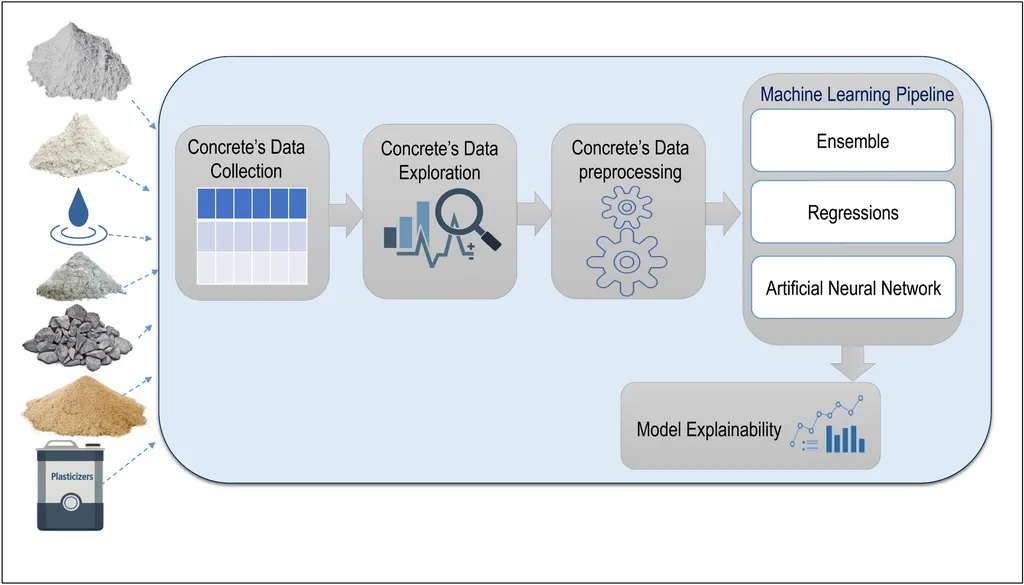In the quest for sustainable construction materials, researchers are increasingly turning to innovative solutions that balance performance and environmental responsibility. A recent study led by Abolfazl Soleymani-Tushmanlo from the School of Civil Engineering at Iran University of Science and Technology has made significant strides in this area by leveraging machine learning to predict the compressive strength of pumice-based concrete. Published in *Case Studies in Construction Materials* (translated from Persian as “Case Studies in Building Materials”), this research not only advances the field of sustainable construction but also offers practical insights for engineers and industry professionals.
The study focuses on the 28-day compressive strength (CS) of concrete mixes incorporating pumice, a volcanic rock that can partially replace cement, reducing the environmental footprint of concrete production. “Designing concrete mixes that are both strong and sustainable is a growing priority,” Soleymani-Tushmanlo explained. “By integrating machine learning models, we can optimize these mixes more efficiently and accurately than ever before.”
The research team compiled a dataset of 304 concrete mix designs from existing literature and developed seven widely used machine learning algorithms, including artificial neural networks (ANN), decision trees, and boosting methods. The novelty of their approach lies in the use of a hybrid ensemble learning model, which combines the strengths of multiple base learners through Grey Wolf Optimizer (GWO) weighting. This method not only improves predictive accuracy but also provides interpretable insights into the mix design parameters.
“The hybrid model achieved an impressive R² of 0.954 and an RMSE of 5.00 MPa on unseen test data,” Soleymani-Tushmanlo noted. “This level of accuracy is crucial for engineers who need reliable predictions to guide their mix designs.”
Beyond the numerical accuracy, the study incorporates SHAP (SHapley Additive exPlanations) analysis to offer engineering-relevant insights. This feature bridges a gap often overlooked in prior studies, helping engineers understand the role of key factors such as cement content, coarse aggregate to fine aggregate ratio (CA/FA), superplasticizer dosage, and water to powder ratio (W/P). “By understanding these parameters, engineers can make more informed decisions that balance performance and sustainability,” Soleymani-Tushmanlo added.
The practical significance of this research extends to the commercial impacts for the energy sector. As the demand for sustainable construction materials grows, the ability to predict and optimize the compressive strength of pumice-based concrete can lead to more efficient and environmentally friendly building practices. This, in turn, can reduce the carbon footprint of construction projects and contribute to the broader goals of energy efficiency and sustainability.
The code used in this study is available on GitHub, making it accessible for other researchers and industry professionals to build upon this work. As the construction industry continues to evolve, the integration of machine learning and sustainable materials will play a pivotal role in shaping future developments. This research not only sets a new standard for predictive accuracy but also underscores the importance of interpretability and practical application in the field of sustainable construction.
In the words of Soleymani-Tushmanlo, “This study is a step towards a more sustainable future, where technology and innovation work hand in hand to create better, greener buildings.”

